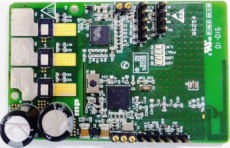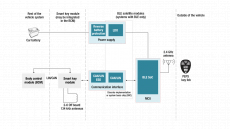Sidebar
This reference design offers a Bluetooth® 5.0 SimpleLink™ option with better industrial noise immunity, more range, and less power for industrial applications such as power tools that operate from a 5- cell Li-ion battery. This power stage reference design uses a single Bluetooth low energy (BLE) MCU for both wireless connectivity and three-phase brushless DC (BLDC) motor trapezoidal control, designed in a single board, reducing the BOM and hence overall cost. The design demonstrates the BLE RX sensitivity of –96 dBm even when the power stage is driving motor, showing the robustness of RF performance. The design also demonstrates a small form factor power stage with overcurrent and short-circuit protection by MOSFET VDS sensing.
This reference design enables a wearable, optimized saturation of peripheral capillary oxygen (SpO2) and multi-sensor, multi-wavelength optical heart rate monitor (HRM). It uses AFE4420 device, which is a single-chip, bio-sensing front end for photoplethysmography (PPG) measurements. It supports up to four switching light-emitting diodes (LEDs) and up to four photodiodes to enable signal acquisition of up to 16 Phases. The CC2640R2F device (supporting Bluetooth® low energy 4.2 and 5) transfers the measured data to a remote location. This patient-monitoring design uses a single CR3032 battery with a 30-day life cycle. Raw data is available to calculate heart rate, SpO2, and other related parameters. 2 onboard light-emitting diodes (LEDs) identify low-battery detection and a Bluetooth connection.
Car access has become more convenient as design engineers take advantage of technologies that are widely used in other applications. The automotive industry has evolved from providing mechanical keys to unlock vehicles to fobs with buttons that can unlock vehicles. Now, the most common form of car access revolves around passive entry passive start (PEPS) systems, enabling drivers to enter their car but also start the engine without physically using a key.
物联网发展到如今,无线技术纷繁复杂,往往会出现在同一区域的不同设备上,这些无线通信设备之间会出现相互干扰的现象。然而,蓝牙5标准可以减少和其他无线通信技术之间存在的干扰,帮助设备在复杂的物联网环境中与其他无线设备并存。
蓝牙5是由蓝牙技术联盟在2016年提出的蓝牙技术标准,蓝牙5在蓝牙4.2核心规范上大幅提升效能,包括「2倍的传输速度」「4倍的传输距离」「8倍的广播数据传输量」等新优势,强化了在物联网方面的新特性,重点提高物联网的功能。




